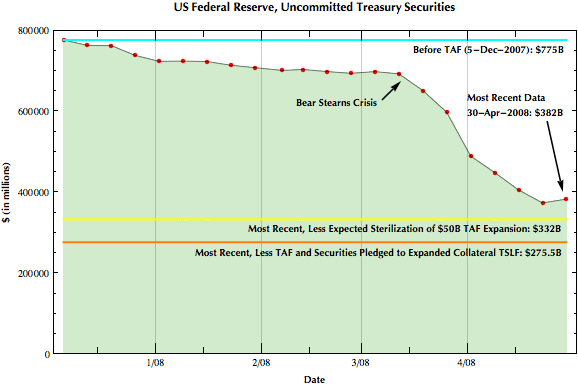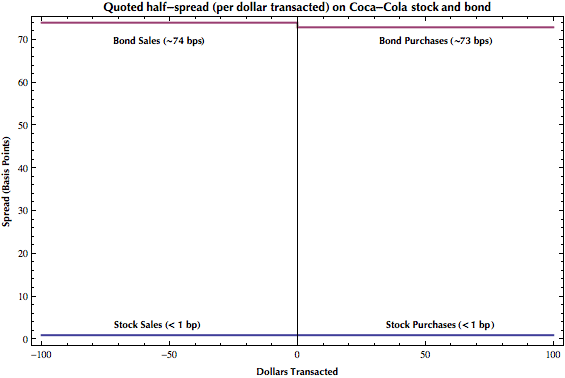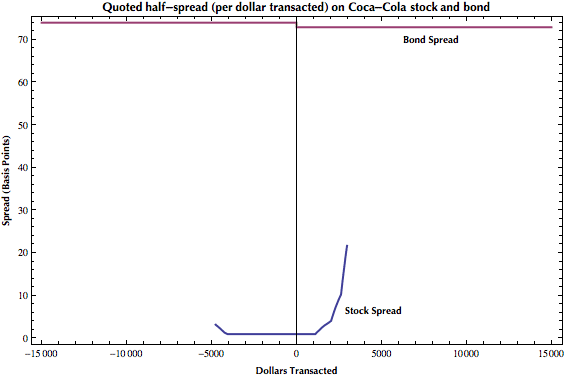Claims on claims, not claims on commodities
Poor, abused readers — I am making a recycling bin of your eyes!
The following is modified from a monstrosity I began and abandoned over a month ago, thinking about futures markets. Michael Masters’ allegations regarding “index speculators” and the CFTC’s investigation of price manipulation in the oil market only make sense if the arbitrage between future claims and physical stuff fails to work as advertised. The most clear example arbitrage failures have been with agricultural products, where cash market prices and prices of supposedly equivalent expiring futures contracts have simply not converged. It is to that (now ancient in blog-years) controversy that this suggestion was originally addressed, but I think it applies to the more recent hullabaloo as well. I’m sorry that the links and context are somewhat dated.
For those of you who have been in the financial equivalent of outer space (that is, for those of you with a life), commodity futures markets have been misbehaving recently. I don’t want to get into it, but see here and here and here and here and here and here. The problem is that textbook arbitrage constraints are coming loose, the prices of things are wriggling free from one another in incoherent ways, and smashing up farmers in their confusion. Arbitrage is to finance what gravity is to physics. The movement of the spheres makes no sense, has no meaning, if rational relationships between prices aren’t maintained.
The universe is blessed with diligent quantum smurfs who ensure the constancy of gravity for us. But arbitrage is left in the frail hands of humans, and frequently our institutions are not up to the task. Fortunately, institutions are fixable. The trouble with commodity futures is that, although all the world can see that, say, spot and future corn seem inconsistently priced, relatively few actors — those with ready access to good, wholesale corn and the means and expertise to store and deliver it — can actually make the trade that would force prices and cosmic spheres to realign themselves. There are limits to arbitrage.
So, a suggestion: As an alternative to delivering actual corn to one of various warehouses in Illinois, permit those short a futures contract deliver a note issued by a kind of “corn bank”, entitling the bearer to a quantity of that very same corn on demand from the bank’s warehouses. Futures exchanges would regulate and certify competitive commodity banks, delivery of whose notes would constitute contract fulfilment [1]. At the same time, exchanges would host accessible cash markets in these zero-maturity notes (against which there would be negative accruals to cover storage costs, but lets put this technical detail aside for now).
At first glance, this proposal is a kind of nonsolution: Sure, convergence failures in futures markets would trivially disappear, as financial investors would purchase and hold underpriced spot claims and short overpriced futures (or vice versa) if the futures and spot prices were misaligned. But today’s convergence failures would just reappear in the form of overpriced deliverable notes relative to the cash price of the commodities they represent. Why would that help?
Financial markets are fundamentally information processing devices. Their purpose is to help investors place capital (or risk) where it can do the most good (or least harm). Thus, it matters very much whether the structure of a market reveals or obscures relevant details about an economic problem. This was a fatal flaw of the late securitization boom — there’s nothing wrong with securitization per se, it’s a great idea actually, to get previously obscure investments priced by broad and deep capital markets. But capital markets aren’t magic. If the securities hawked are complicated bundles of mathematical formulas of incompletely described uncertain securities, “market prices”, while they last, may not prove reliable. (OT: See this great post by Going Private about the CDO securitization process).
Trading claims on deliverables rather than direct obligations to deliver would open the arbitrage process to all financial investors, rather than relying on small groups of potentially collusive firms. Mysterious convergence failures would disappear. Rather than going “WTF?” and convening at the CFTC, we’d observe commodity banks eager but unable to sell simple IOUs for commodities at prices well above their cost because they lack storage or shipping capacity. A phenomenon of high finance would unmask itself as an easy to remedy operational problem, with a clear business case attached. Of course, people in commodity industries already understand the bottlenecks they face, and eventually they’ll find the financing to do whatever needs to be done. But clarity matters. A couple of months ago, farmers and grain elevators faced a “liquidity crisis” — their traditional funding sources, banks, were skittish due to the credit crunch, and other capital sources don’t understand their business well enough to jump in with quick money. With a more transparent informational architecture, capital would cure bottlenecks faster. Time is always of the essence, both from a broad economic perspective, and to farmers who are struggling to meet margin calls on volatile futures contracts when all they want to do is lock-in a price for corn.
This scheme would also render market manipulation more visible, by eliminating complexity at the interface between opaque, dispersed cash markets and liquid, transparent futures markets. If futures prices spike somehow, spot note price would rise, which ought to cause banks to compete for cheap access to the physical commodity. If prices seem “too high”, regulators could focus on spot market conditions (are commodity banks competitive? are producers withholding output? are precautionary inventories rising at banks? is there unusual non-bank-intermediated demand, either by current users or speculators?). Arbitrage relationships hold quite well among predictable, liquid paper assets. With a simple market for spot claims, regulators could focus on the present, and let the future take care of itself.
[1] Exchanges would insist upon these notes being non-fractional claims against actual inventory, as the exchange’s clearinghouse would ultimately guarantee the notes. These would be depreciating, negative carry notes (due to storage costs), so investors without use of the commodity would shed notes quickly, keeping inventories minimal, unless they wish to finance storage for precautionary or speculative purposes (which inventories would be transparent and measurable). Banks would compete both on the price (reflecting their quality of access to the dispersed cash market) and storage fees (reflecting operational efficiencies).




